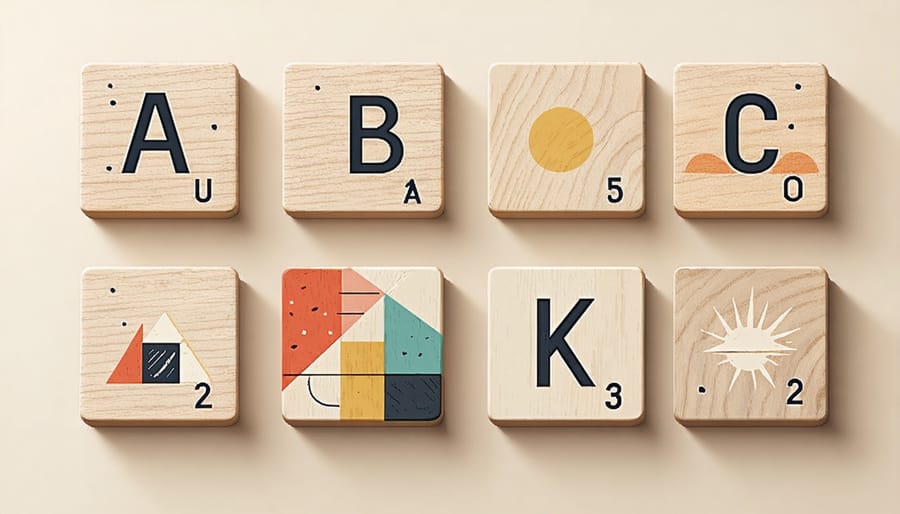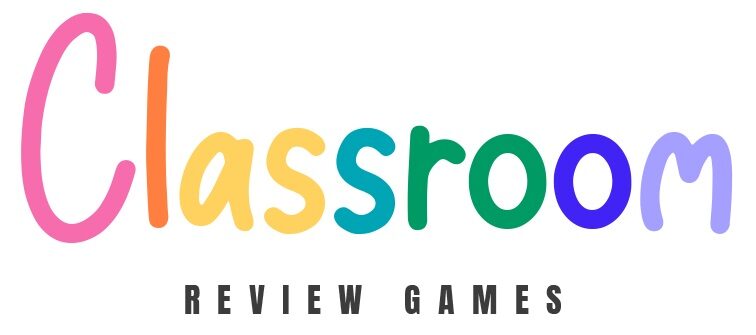Make Anagram Games Your Secret Weapon for Student Engagement
Transform your classroom into a dynamic learning space with word games for students that spark creativity and boost vocabulary skills. Anagram word games offer an engaging way to strengthen spelling, enhance critical thinking, and develop linguistic flexibility – all while keeping students actively involved and entertained.
Start with simple three-letter words, challenging students to create as many combinations as possible from base words like “cat” (act, tac) or “dog” (god). Progress to longer words that yield multiple possibilities, such as “listen” (silent, enlist, tinsel), allowing students to discover the fascinating connections between letters and meaning. Use themed vocabulary lists from current lessons to reinforce subject-specific learning through playful word manipulation.
Create collaborative teams for anagram challenges, fostering peer learning and healthy competition. Students naturally develop pattern recognition skills, improve spelling awareness, and build confidence in word manipulation – essential components for reading and writing success. These versatile games adapt seamlessly to different grade levels, learning objectives, and time constraints.
Why Anagram Games Transform Classroom Learning

Building Vocabulary Through Word Play
Anagram word games serve as powerful tools to increase student engagement while building essential vocabulary skills. When students rearrange letters to discover new words, they naturally develop pattern recognition abilities and strengthen their understanding of word structure. This hands-on approach helps learners remember vocabulary more effectively than traditional memorization methods.
Students who regularly play with anagrams become more confident in recognizing word families, prefixes, and suffixes. They start seeing relationships between words and understanding how letter combinations work together. For example, when students discover that “listen” and “silent” share the same letters, they create meaningful connections that stick in their memory.
The beauty of anagram activities lies in their ability to make vocabulary practice feel like a puzzle rather than a chore, leading to better retention and more enthusiastic participation from students.
Boosting Critical Thinking Skills
Anagram puzzles are fantastic tools for developing essential critical thinking skills in students. When students unscramble letters to form new words, they engage in active problem-solving and pattern recognition. This mental exercise strengthens their ability to analyze information, make connections, and think flexibly.
Working with anagrams helps students develop systematic approaches to problem-solving. They learn to break down complex challenges into manageable parts, test different combinations, and persist until they find solutions. These skills naturally transfer to other academic areas and real-world situations.
The beauty of anagram solving lies in its multiple cognitive benefits. Students improve their visual processing skills, enhance working memory, and develop better concentration. As they progress, they begin to recognize common letter patterns and word structures, building stronger vocabulary and spelling skills simultaneously.
For struggling learners, anagrams offer a non-threatening way to build confidence through gradual success. Each solved puzzle reinforces their problem-solving abilities and motivates them to tackle more challenging word combinations.
Easy-to-Implement Anagram Activities
Quick Warm-Up Exercises
Start your class with these quick and engaging anagram warm-ups that take just 5-10 minutes! Ask students to unscramble simple three-letter words like “cat” (tac) or “dog” (god) to build confidence. Then, progress to four-letter words such as “time” (mite) or “star” (rats).
For a whole-class activity, write a scrambled word on the board and have students race to solve it. Keep a stack of word cards ready with scrambled versions on one side and solutions on the other for easy reference.
Make it collaborative by dividing students into pairs. Give each pair a short word and have them create as many anagrams as possible in two minutes. For example, “stop” can become “post,” “pots,” and “tops.”
For morning routines, write a “Word of the Day” on the board in scrambled form. Students can work on it as they settle into class. Choose words that relate to your current lesson topics to reinforce vocabulary learning while having fun!
Remember to keep these warm-ups light and playful – they’re meant to energize your class and get those creative minds working.

Team-Based Challenges
Turn your classroom into a collaborative learning space with these exciting team-based anagram challenges! These games not only reinforce vocabulary skills but also promote teamwork and friendly competition among students.
Start with “Relay Race Anagrams,” where students work in small groups of 3-4. Give each team a set of letter cards or magnetic letters. Call out a word, and teams must work together to create as many anagrams as possible within a set time limit. The twist? Only one student can arrange letters at a time, requiring them to take turns and communicate effectively.
“Anagram Categories” is another engaging group activity. Divide the class into teams and provide a long word or phrase. Teams collaborate to create smaller words using the available letters, organizing them into categories like animals, foods, or actions. Award bonus points for words that fit multiple categories!
For a more active approach, try “Walking Word Wall.” Post several long words around the classroom. Teams move from word to word, working together to discover anagrams. One team member can be the scribe while others manipulate letters. This gets students moving while learning!
“Challenge Chain” encourages strategic thinking. Teams start with a word and must create a new anagram from the previous team’s word. For example: TEAM → MATE → TAME → MEAT. The chain continues until a team can’t create a new anagram.
Remember to adjust difficulty levels based on your students’ abilities. You can use simple three-letter words for younger learners or challenge older students with longer, more complex words. Consider creating themed rounds using vocabulary from your current lesson plans to reinforce subject-specific learning.
Customizing Anagram Games for Your Subject
Subject-Specific Word Banks
Create targeted word banks that align perfectly with your subject area to make anagram activities more meaningful for your students. For science classes, compile lists featuring terms like “molecule,” “ecosystem,” and “photosynthesis.” History teachers can focus on important vocabulary like “revolution,” “civilization,” and “democracy.” Math word banks might include “equation,” “geometry,” and “fraction.”
Keep your word banks organized by topic or unit, making it easy to integrate anagram activities with your current lesson plans. Consider creating different difficulty levels within each subject area – shorter words for beginners and longer, more complex terms for advanced students.
Pro tip: Include both basic vocabulary and challenging terminology in your word banks. This allows you to differentiate instruction while keeping all students engaged. For language arts, mix simple words like “plot” and “theme” with more advanced terms such as “personification” or “metaphor.”
Remember to update your word banks regularly with new vocabulary as you progress through your curriculum. This keeps the activities fresh and relevant to what your students are currently learning.
Difficulty Level Adjustments
Adjusting difficulty levels in anagram games is crucial for keeping all students engaged and challenged. For beginners, start with shorter words (3-4 letters) and provide letter banks or visual clues. You might use simple, familiar words like “cat,” “dog,” or “star” to build confidence.
For intermediate players, increase word length to 5-6 letters and introduce word families or themes. For example, use science vocabulary during a biology unit or seasonal words during holidays. Consider giving partial hints or first letters to support learning.
Advanced students can tackle longer words, multiple anagrams from one word, or timed challenges. Challenge them to create sentences where each word is an anagram of another, or have them solve anagrams without any hints. You can also incorporate vocabulary from current lessons to reinforce learning objectives.
Make adjustments on the fly by observing student engagement. If students seem frustrated, offer more hints or shorter words. If they’re breezing through, add time limits or bonus challenges to maintain interest and motivation.
Tech Tools for Anagram Success
Looking to supercharge your anagram activities? Today’s educational technology tools make it easier than ever to create and manage engaging word games. Here are some fantastic digital resources to get you started!
WordFinder and Wordsmith are free online tools that instantly generate anagrams from any word or phrase you input. Perfect for creating custom puzzles or checking student answers on the fly! For a more interactive experience, try Anagram Solver Pro, which lets students drag and drop letters to form words while tracking their progress.
Want to create whole-class activities? Websites like Word Games Lab and AnagramMaker offer customizable templates where you can input vocabulary from your current lesson plan. Many of these platforms include built-in timers and scoring systems to add some friendly competition.
Don’t forget about mobile apps! Word Scramble Plus and Jumble Master are classroom favorites that work great for both individual practice and small group activities. These apps often include difficulty levels suitable for different grade levels.
For tech-savvy teachers, platforms like Kahoot! and Quizlet now feature anagram game modes that you can easily integrate into your existing digital lessons. These tools allow you to save custom word lists and track student progress over time.
Remember, the best tool is one that matches your teaching style and your students’ needs. Start with one or two resources and expand as you get comfortable!

Anagram word games offer an exciting and versatile way to enhance vocabulary, spelling, and critical thinking skills in your classroom. By incorporating these activities into your daily or weekly routines, you’ll create engaging learning experiences that students actually look forward to. Remember to start simple and gradually increase complexity as your students progress. Whether you choose digital tools, physical letter cards, or a combination of both, the key is to maintain enthusiasm and celebrate student achievements. Don’t hesitate to customize these games for different subjects or learning levels – the possibilities are endless! With consistent practice and your creative guidance, anagram activities can transform routine vocabulary lessons into dynamic, interactive learning adventures that benefit all students.


